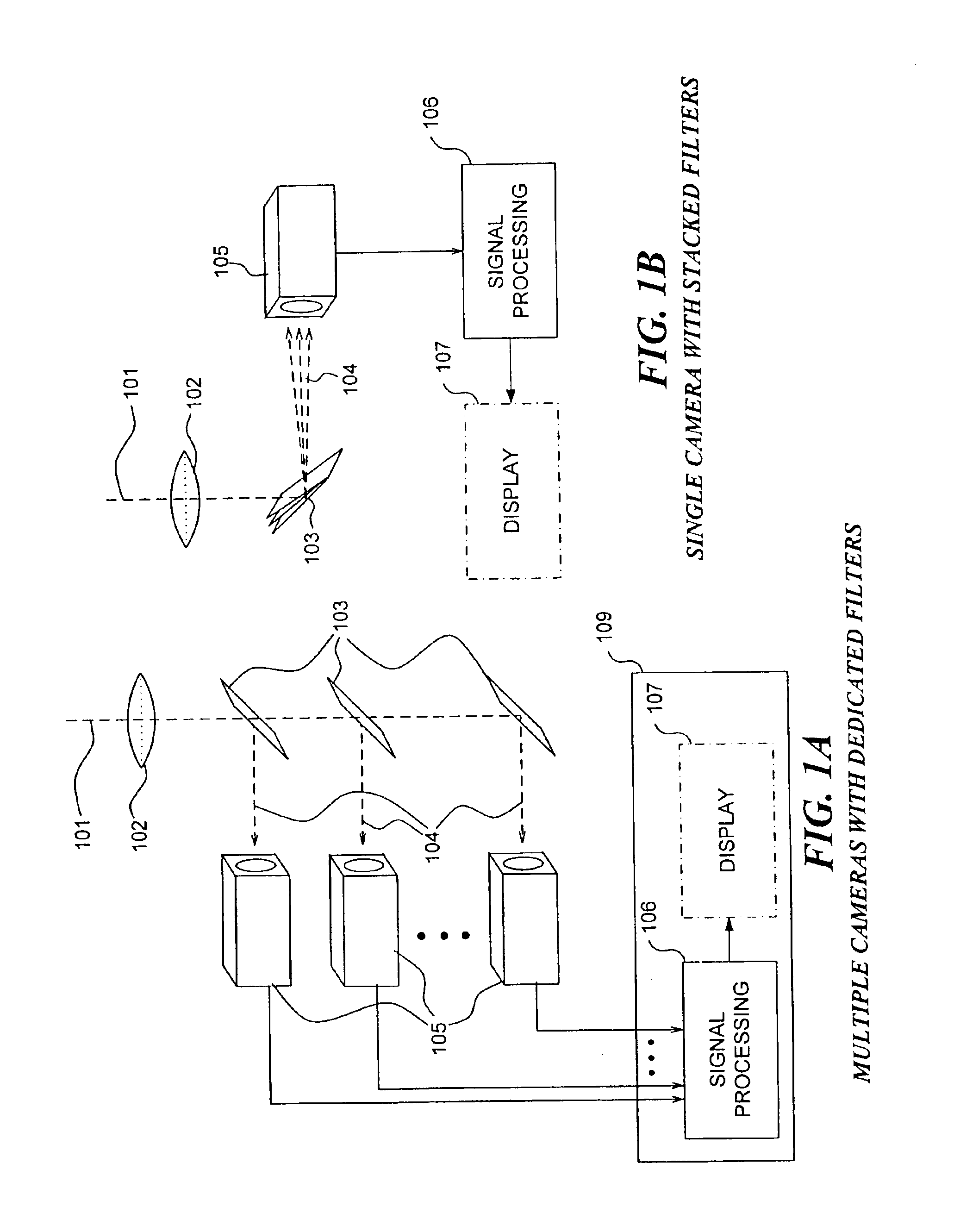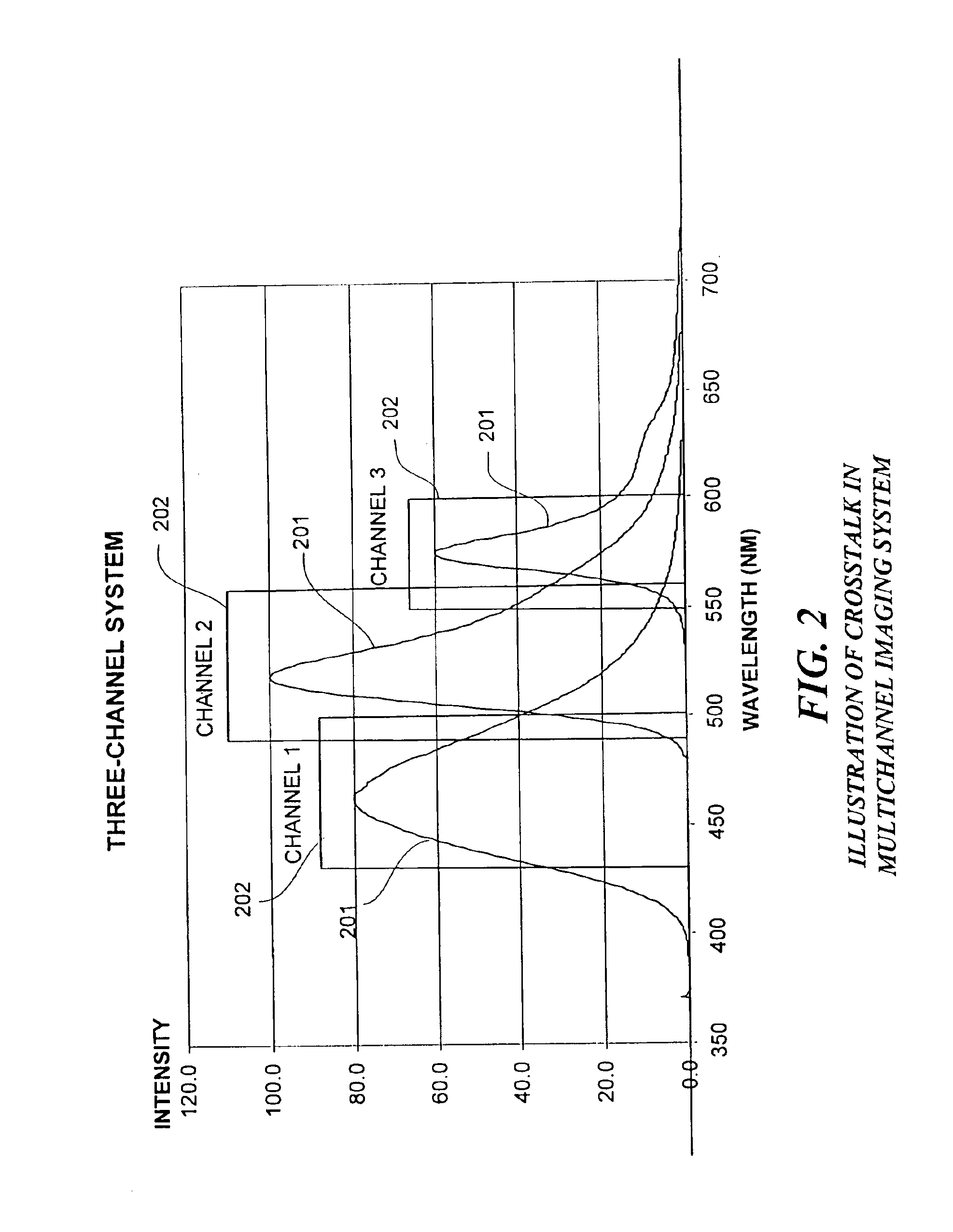Method and apparatus for correcting crosstalk and spatial resolution for multichannel imaging
a multi-channel imaging and spatial resolution technology, applied in the field of multi-channel imaging methods and equipment, can solve the problems of preventing the accurate estimation of the intensity of the signal from each dye, interference can be introduced into a channel dedicated to a first signal, and information can be degraded during the capture process, so as to reduce the contribution of erroneous information
- Summary
- Abstract
- Description
- Claims
- Application Information
AI Technical Summary
Benefits of technology
Problems solved by technology
Method used
Image
Examples
Embodiment Construction
[0059]FIGS. 1A and 1B illustrate two configurations of an instrument for implementing the present invention. FIG. 1A shows an embodiment that utilizes a plurality of photosensitive cameras 105. Lens 102 is used to form images on the photosensitive detector arrays of cameras 105. The light along each image formation path 101 is filtered by specially designed mirrors 103 that transmit light in a first range of wavelengths and reflect light in a second range of wavelengths, defining a plurality of different wavebands that are received by individual cameras 105. The signals from cameras105 are processed by signal processing means 106, which aligns the signals relative to each other, and reduces crosstalk between signals. An optional element is a display 107, on which the plurality of images corresponding to the processed signals can be displayed to a user.
[0060]While display 107 will often be beneficially incorporated in such a system, such a display is not required. For example, a user...
PUM
 Login to View More
Login to View More Abstract
Description
Claims
Application Information
 Login to View More
Login to View More - R&D
- Intellectual Property
- Life Sciences
- Materials
- Tech Scout
- Unparalleled Data Quality
- Higher Quality Content
- 60% Fewer Hallucinations
Browse by: Latest US Patents, China's latest patents, Technical Efficacy Thesaurus, Application Domain, Technology Topic, Popular Technical Reports.
© 2025 PatSnap. All rights reserved.Legal|Privacy policy|Modern Slavery Act Transparency Statement|Sitemap|About US| Contact US: help@patsnap.com



